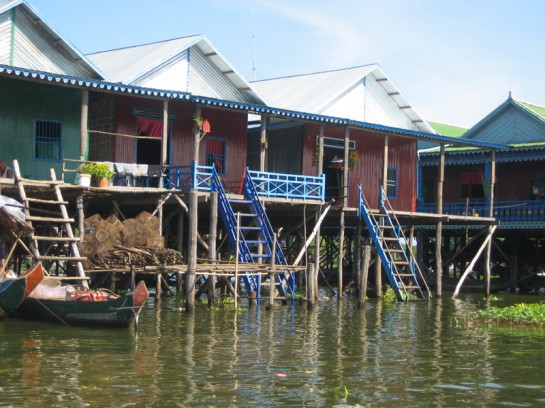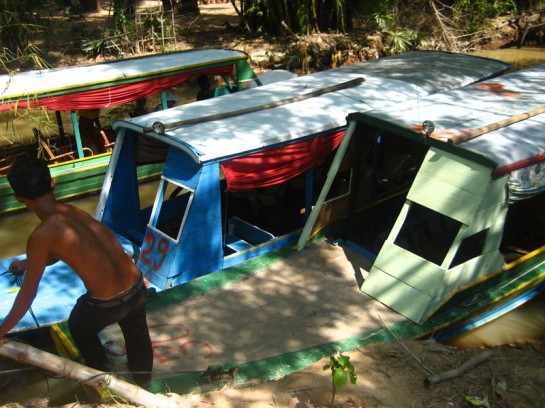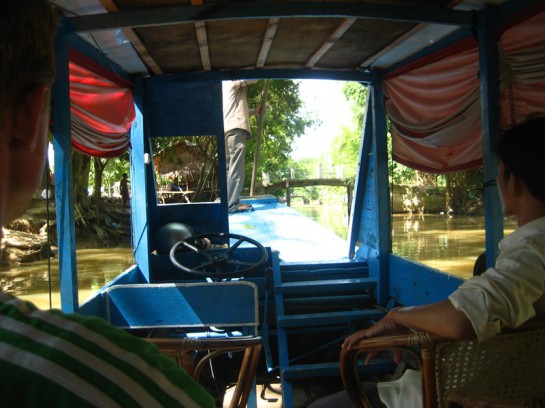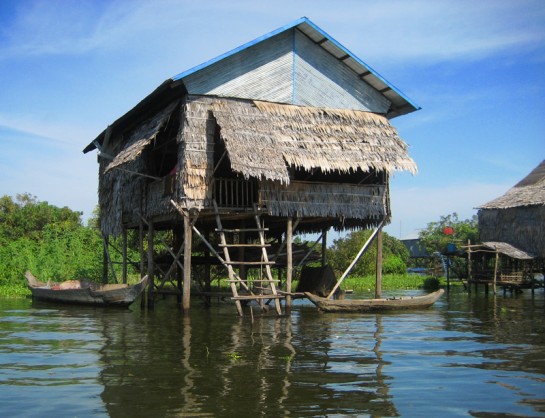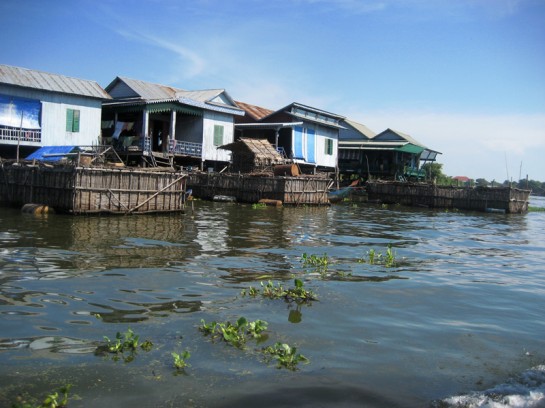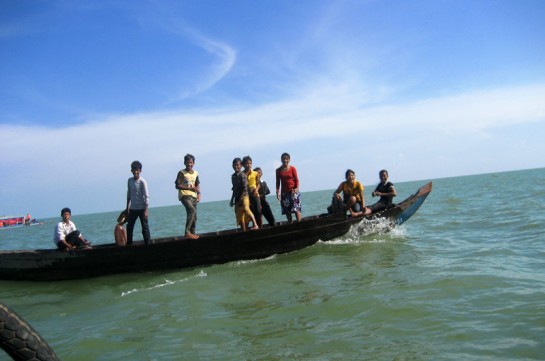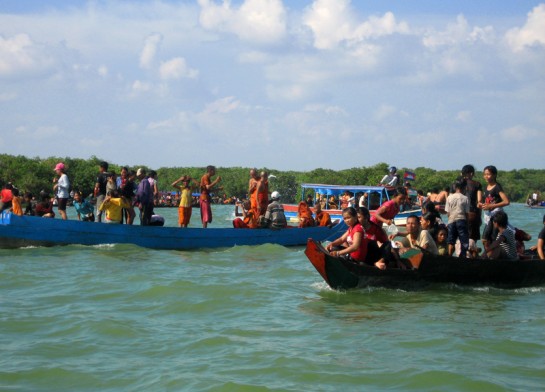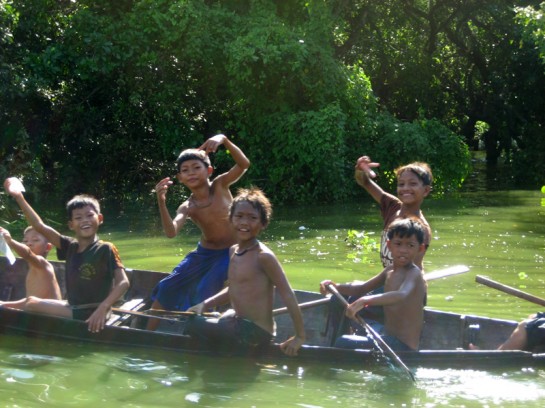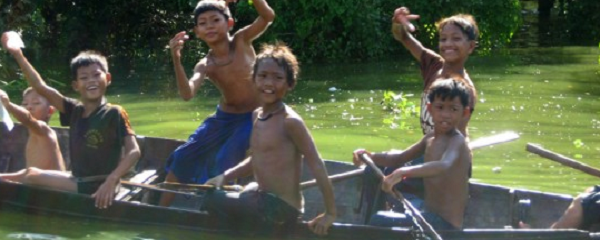
The Floating Village in Cambodia
CultureLife is different for the people who live in the Floating Village of Chong Khneas outside of Siem Reap, Cambodia.
A visit here is not soon forgotten – the architecture, the lifestyle and the friendly villagers make for an incredible experience, all you have to do is find a Tuk Tuk driver in Siem Reap who will take you over to the village shore for a reasonable rate (put on your best negotiating face because the starting rate for a 45 minute drive will not come cheap).
After you reach the shore, you will have to pay for a ticket on a boat that will tour you around. Eager tourists are to blame for the heavily inflated boat ride prices, but at this point, the high prices are inevitable (Cambodia is notorious for exploiting tourist curiosity) and luckily still affordable by North American standards.
Tuk Tuk drivers assume the role of tour guide as they try to solicit tourists who are intrigued by the sounds of visiting a remote village on the water. Luckily for the fare-hungry drivers, most tourists cannot pass up the opportunity to catch a glimpse of such a different way of life – after all, who wouldn’t want to see an entire community made up of wood structures that are teetering on stilts over the Tonle Sap by boat?
Houses, temples and shops are constructed out of wood boards and stand a couple of metres above the water’s surface. The Tonle Sap stretches far and wide – it is actually the largest lake in all of Southeast Asia – and supplies the 1300 houseboats in the community with freshwater, fish and one giant recreational swimming pool.
The homes in Chong Khneas are beautifully painted and fully functional – they have makeshift “driveways” with boats tethered to poles, ladders that lead up to the indoor living space and a storage deck for cows and chickens that is suspended beneath the house ( but still above the water).
It’s quite rare to see the trees and shrubs that grow right out of the water – if it weren’t for the deliberately elevated houses, one would think the area had been flooded. It’s a surreal sight to say the least, but it’s nothing more than everyday life as usual for the Chong Khneas community.
The drive over to the Floating Village is just as memorable as the village itself, especially since you will likely cross paths with more smiling children walking along the side of a dusty gravel road than you can count. My experience with children in Cambodia up until I visited the Floating Village had been really sad – all of them in the main tourist areas of Phnom Penh and Siem Reap had approached me begging (literally, tugging on my clothing) for money, food, books, jewelry…anything that they could eat or sell. It is heart-breaking not to be able to give money to a single child in a group of 20 kids that seems to turn into a group of 30 kids within a matter of minutes; but despite the poverty and harsh living conditions, the children of Chong Khneas will wave excitedly as you drive by and put on their best I-know-how-to-scream-’hello’-in-English show. It’s a beautiful (and equally heart wrenching) scene. You will be tempted to jump out of the Tuk Tuk and hug them all…which is no problem because they will all want to hug you too.
A visit to the Floating Village is particularly memorable during the Water Festival season. There are various water festivals celebrated in various parts of Cambodia throughout the year, but the most famous takes place in Phnom Penh during October and November. The festival marks the end of the rainy season when the flooded Mekong River finally redistributes its water back out to connected river arteries – including the Tonle Sap – and the fishing season commences. In Chong Khneas, you will see children by the boatloads engaging in one giant water-fight on the lake.
They playfully attack each other with large buckets and plastic bags full of water (Cambodia’s version of the water balloon) all in the name of fun. The sounds of deep-belly laughter bounce off the lake and fill the air with genuine sounds of happiness. Even the local monks and novices participate in the celebration – it’s a strange albeit wonderful sight to witness a saffron-robed monk pelt a dripping wet opponent in a nearby tin boat with a water bomb.
It’s refreshing to witness such happiness in a country that is afflicted with the scars of recent genocide (even if it is naive to believe that the temporary laughter is indicative of emotional repair). The pain and suffering of the people of Cambodia knows no boundaries, and yet, most of the people are strong in spirit and determined to persevere in rebuilding a country that is safe, just and stable.





